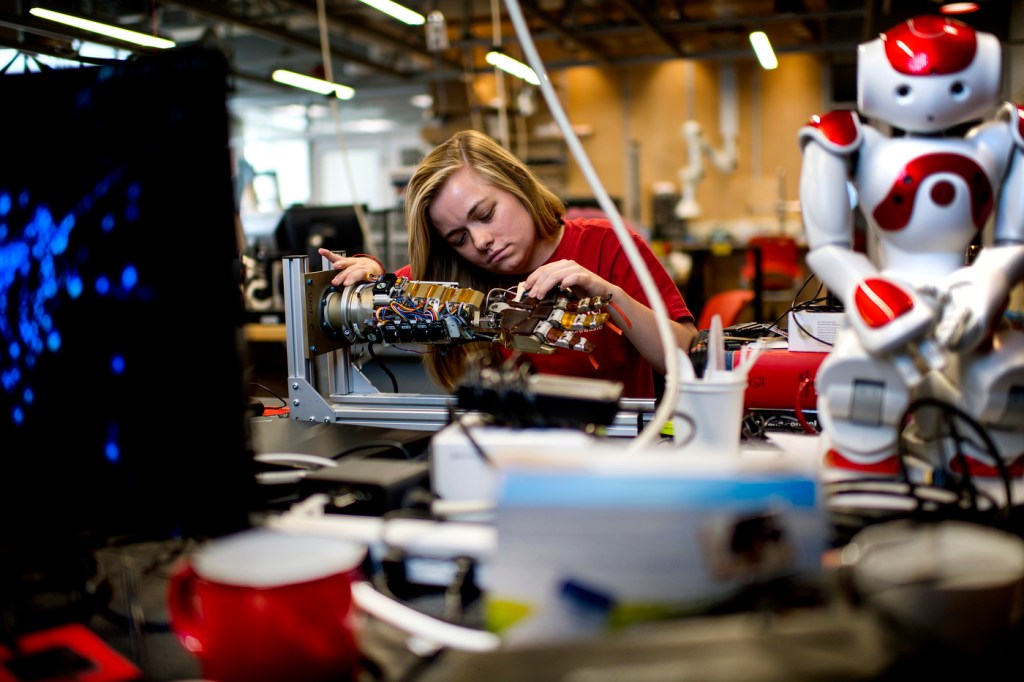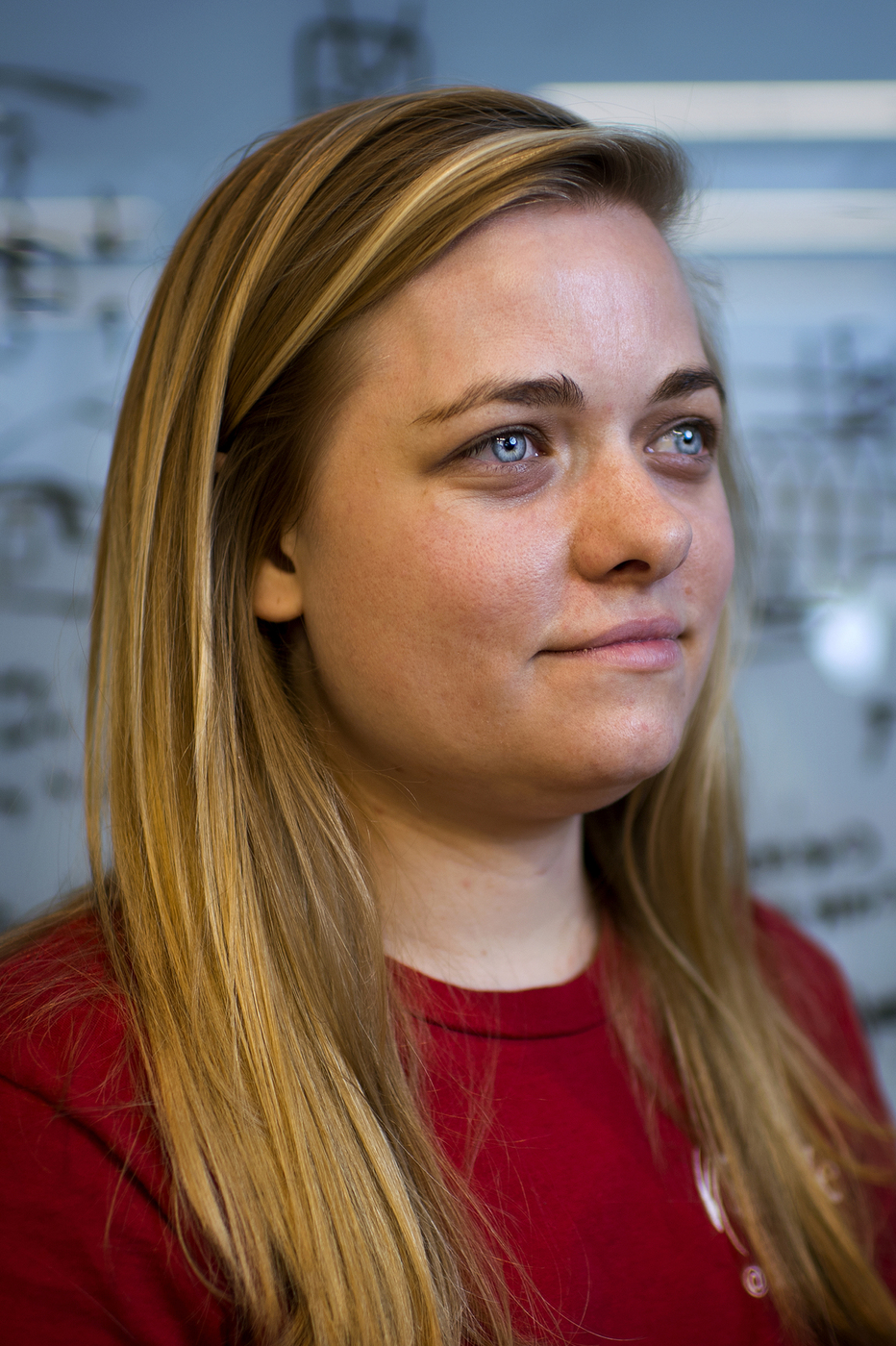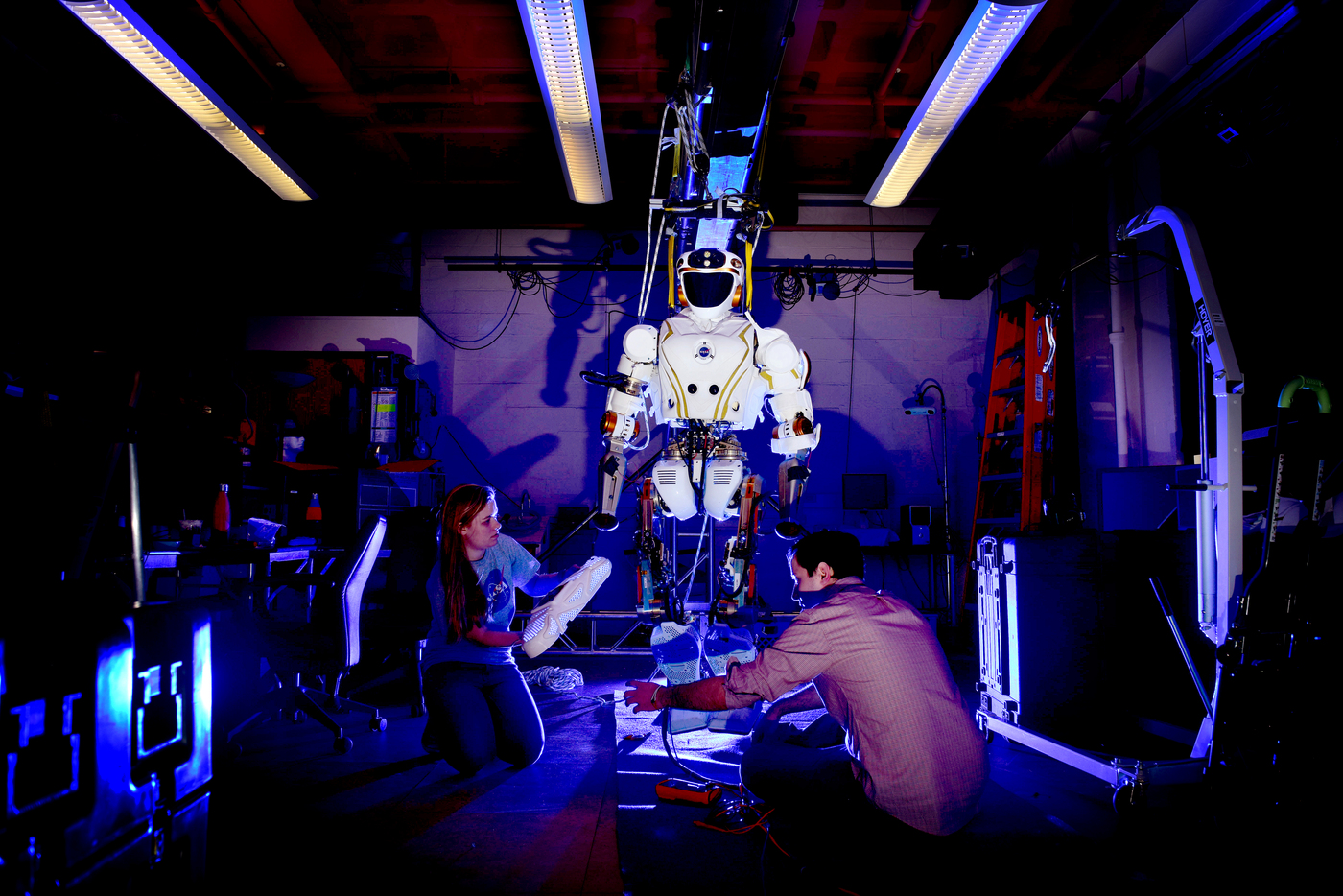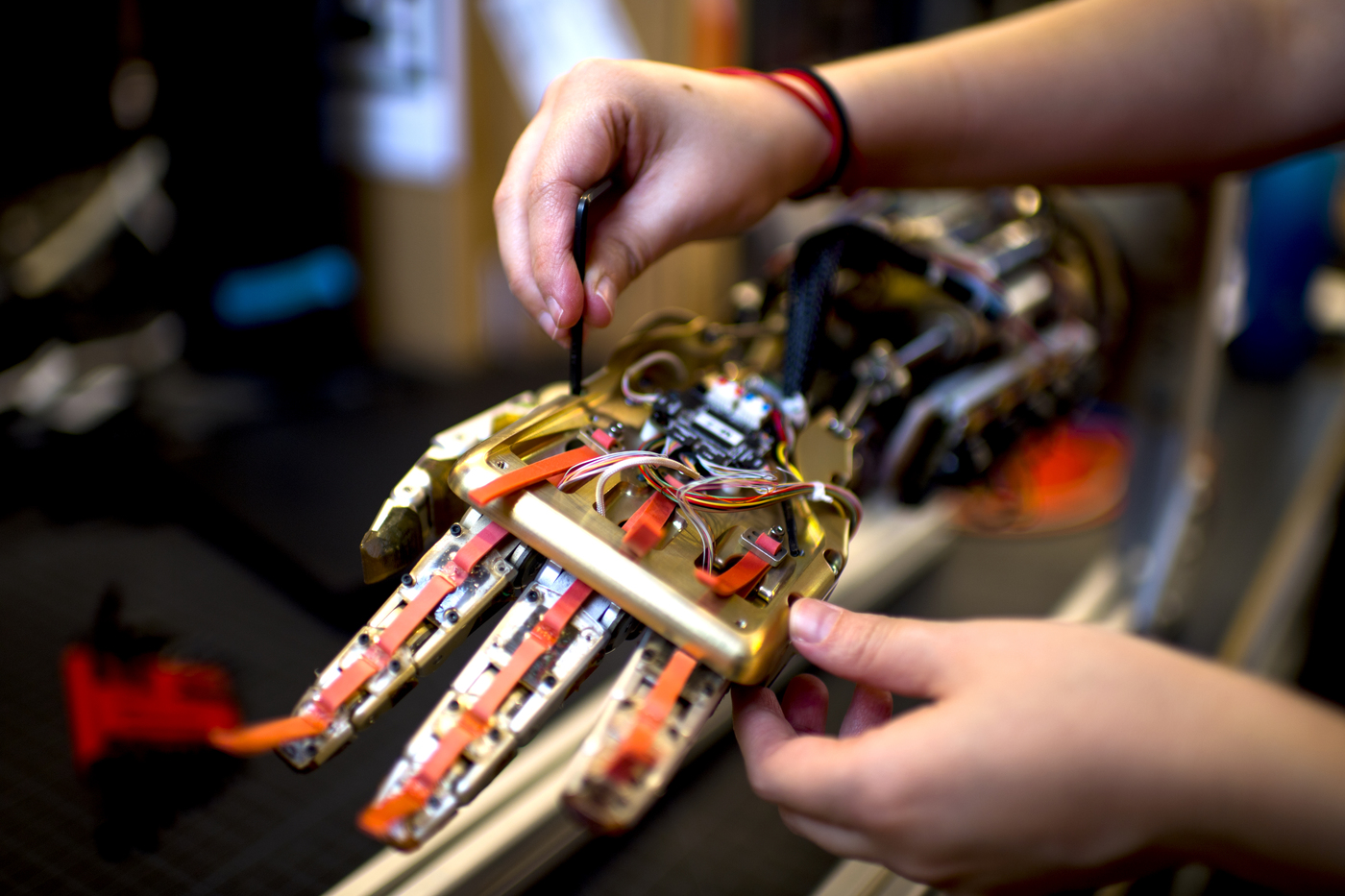Imagine a human-robot friendship

Doctoral student Murphy Wonsick envisions a world where humans and robots coexist as friends. She spends her days trying to figure out how astronauts and robots can work together to complete dangerous tasks in space. In fact, she’s working on one of the world’s most advanced humanoid robots to exist—Northeastern’s NASA robot Valkyrie—under the direction of Taskin Padir, associate professor of electrical and computer engineering at Northeastern.
Wonsick, PhD’20, has known since high school that she wanted to work for NASA. As a teen, she frequently stayed after school for tutoring in advanced mathematics. One afternoon, while considering what she might do with her love for mathematics, a teacher quipped that she could become a rocket scientist.
“I thought, ‘Wait a minute, I can actually do that.’”
Between her sophomore and junior years of high school, Wonsick landed a summer internship at NASA where, she said, she got to “test the waters.” She worked at the Kennedy Space Center, where she had the opportunity to explore the inside of a space shuttle and get an in-depth look at the inner workings of NASA.



“Once I’d done that, I knew this was where I wanted to be,” Wonsick said.
Next, Wonsick attended Florida Institute of Technology to study astrophysics, with the goal of following that path to NASA. She also volunteered as a campus tour guide. Part of the tour included a stop in the school’s robotics lab. “That’s where I fell in love with robotics,” she recalled.
So, not particularly enjoying her initial physics classes, she switched tracks to study computer science and math sciences. She secured a position in the lab and helped write code for what had been a largely mechanical robotics program. In other words, she helped animate the robots that had just been built.
After graduation, Wonsick enrolled at Worcester Polytechnic Institute, where she earned a master’s degree in robotics engineering—and met her mentor, Padir.
Right around the same time, NASA selected a team of Northeastern researchers led by Padir to perform advanced research and development work on Valkyrie, a 6-foot, 290-pound humanoid robot prototype. According to NASA, Valkyrie is primed to play an important role in future deep space exploration and could be sent to Mars to complete tasks before human crews arrive.
“At that point, I thought, ‘Oh my gosh, this is everything I’ve been looking for. This is exactly what I’ve been wanting to do,’” Wonsick said.
Now in Padir’s lab at Northeastern, Wonsick is figuring out how humans and robots can work together to complete space missions. “The whole idea behind the Valkyrie project is that we’re going to Mars or further—to places where we can’t get astronauts back immediately,” she said. “You need someone or something to get there in advance and set up a camp before human arrival. The interesting question to me is: Great, they do that, then humans arrive. Now what?”
Designing robots to tackle tasks that would be dangerous for humans—doing a spacewalk on the International Space Station, say, or setting up a colony on Mars—could potentially save human lives. “For a spacewalk, instead of sending two humans into this high-risk situation, why not send a human and a robot?” Wonsick said.
The pairing comes with huge challenges, though, such as how a human and a robot would team up to handle a mistake. “Two humans can overcome an unexpected situation easily with communication,” Wonsick said. “How do you do that with a robot?”
It’s work that is often challenging and frustrating, but that’s what Wonsick loves about it. And, for this particular robotics research, she’s encouraged by everyday human interactions. “If you think about it, having two very different humans—one short and one tall—figuring out how to perform a task isn’t all that different from what we’re working on here,” she said. “We have differences among ourselves and we figured it out. If we can do it, we can figure out how to teach robots to do it.”





